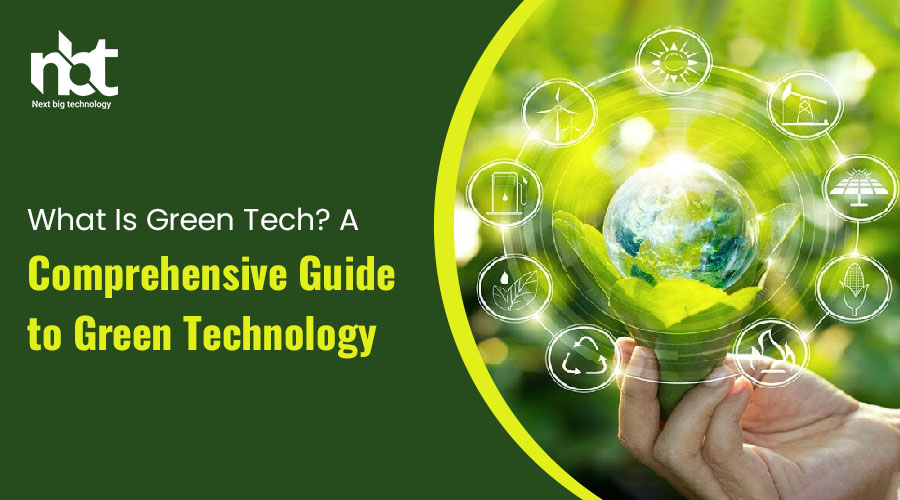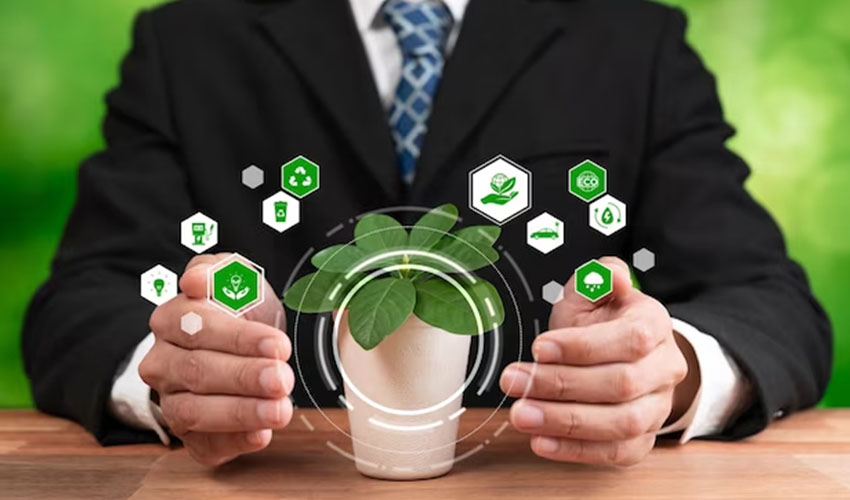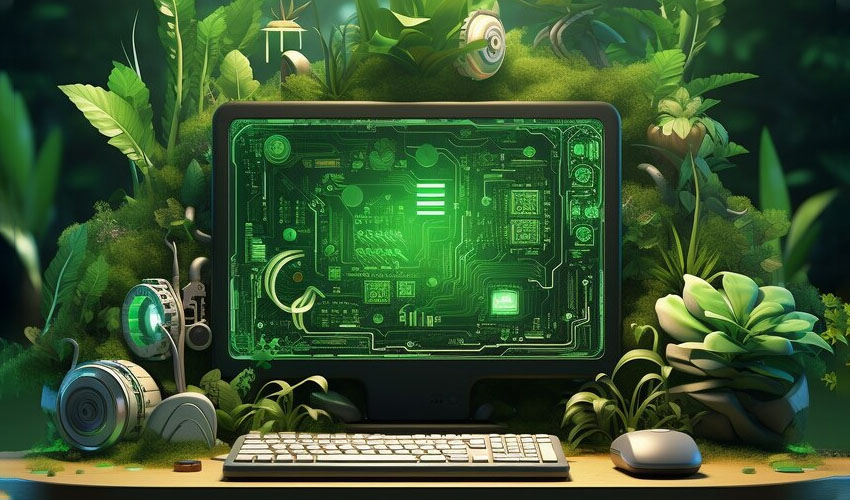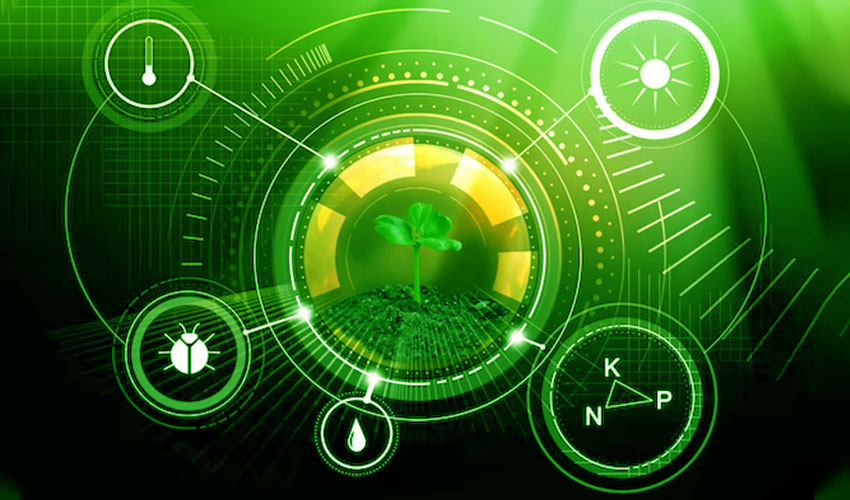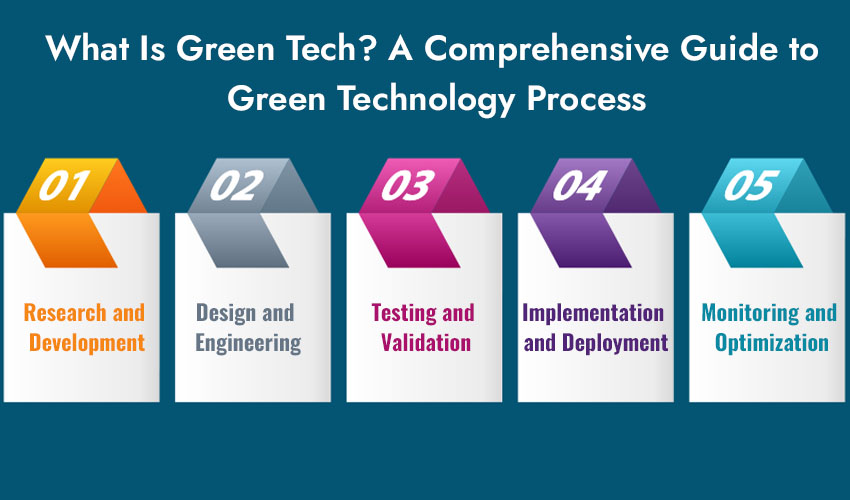Table of Contents
What Is Green Tech? A Comprehensive Guide to Green Technology Services
In today’s world, where environmental concerns are at the forefront of global discussions, the importance of green technology cannot be overstated. Green tech, short for green technology, encompasses a wide range of innovative solutions aimed at reducing environmental impact, conserving resources, and promoting sustainability across various industries. From renewable energy sources to eco-friendly manufacturing processes, green tech is revolutionizing the way we interact with the planet. In this comprehensive guide, we will delve into what green tech is all about and explore the various services it offers.
What is Green Tech?
Green tech refers to any technology or practice that is designed to minimize its environmental impact while maximizing resource efficiency. It encompasses a diverse array of fields, including renewable energy, clean transportation, waste management, water purification, sustainable agriculture, and more. The overarching goal of green tech is to create solutions that are both economically viable and environmentally sustainable, ensuring a greener and healthier planet for future generations.
Types of Green Technology Services
- Renewable Energy: One of the cornerstones of green tech, renewable energy sources such as solar, wind, hydro, and geothermal power offer clean alternatives to fossil fuels. Green tech companies specialize in designing, installing, and maintaining renewable energy systems for residential, commercial, and industrial applications.
- Energy Efficiency: Improving energy efficiency is crucial for reducing greenhouse gas emissions and combating climate change. Green tech services in this category include energy audits, building retrofits, smart HVAC systems, LED lighting, and energy management software to optimize energy consumption and lower carbon footprints.
- Clean Transportation: Transportation accounts for a significant portion of global carbon emissions. Green tech solutions in this sector include electric vehicles (EVs), public transit upgrades, bike-sharing programs, and infrastructure developments such as EV charging stations and bike lanes, all aimed at promoting greener and more sustainable transportation alternatives.
- Waste Management: Green tech companies develop innovative waste management solutions to minimize landfill waste, promote recycling and composting, and harness energy from organic waste through methods like anaerobic digestion and waste-to-energy conversion.
- Water Conservation and Purification: With water scarcity becoming an increasingly pressing issue, green tech services focus on water conservation measures such as rainwater harvesting, greywater recycling, and drip irrigation, as well as advanced water purification technologies to ensure clean and safe drinking water for communities worldwide.
- Sustainable Agriculture: Green tech plays a vital role in promoting sustainable farming practices that prioritize soil health, water conservation, biodiversity, and organic farming methods. Services may include precision agriculture technologies, agroforestry initiatives, and alternative farming practices like vertical farming and aquaponics.
The Benefits of Green Technology Services
- Environmental Preservation: Green tech helps reduce pollution, conserve natural resources, and mitigate the impacts of climate change, contributing to the preservation of ecosystems and biodiversity.
- Economic Growth: Investing in green technology creates new job opportunities, stimulates economic growth, and fosters innovation and entrepreneurship in the rapidly expanding green tech sector.
- Energy Independence: By harnessing renewable energy sources and promoting energy efficiency, green tech reduces reliance on fossil fuels and enhances energy security and independence.
- Public Health: Cleaner air and water resulting from green tech initiatives lead to improved public health outcomes, reducing the prevalence of respiratory illnesses and waterborne diseases.
How to Create a What Is Green Tech? A Comprehensive Guide to Green Technology
In a world increasingly concerned about environmental sustainability, the concept of green technology has emerged as a beacon of hope. But what exactly is green tech, and how can it be implemented in our daily lives? Let’s embark on a journey to unravel the intricacies of green technology and explore how it can pave the way for a more sustainable future.
Understanding Green Technology
Green technology, often referred to as clean technology or environmental technology, encompasses a wide range of practices, innovations, and solutions aimed at conserving natural resources, reducing pollution, and minimizing the negative impact on the environment. From renewable energy sources to waste management techniques, green tech offers diverse approaches to address pressing environmental challenges.
Key Components of Green Technology
- Renewable Energy: At the forefront of green technology are renewable energy sources such as solar, wind, hydro, and geothermal power. These sources harness the natural elements to generate electricity without depleting finite resources or emitting harmful greenhouse gases.
- Energy Efficiency: Improving energy efficiency is another vital aspect of green technology. This involves designing energy-efficient buildings, appliances, and transportation systems to minimize energy consumption and reduce carbon emissions.
- Waste Management: Green technology offers innovative solutions for waste management, including recycling, composting, and waste-to-energy processes. By diverting waste from landfills and incinerators, these techniques help conserve resources and mitigate environmental pollution.
- Clean Transportation: The transportation sector accounts for a significant portion of global carbon emissions. Green technology promotes clean transportation alternatives such as electric vehicles (EVs), public transit systems, and sustainable fuels to reduce reliance on fossil fuels and curb air pollution.
- Water Conservation: Efficient water management is crucial for preserving this precious resource. Green technology includes water-saving technologies for agriculture, industrial processes, and domestic use, as well as wastewater treatment methods to minimize pollution.
Benefits of Green Technology
- Environmental Preservation: By reducing reliance on fossil fuels and minimizing pollution, green technology helps protect ecosystems, biodiversity, and natural habitats.
- Resource Conservation: Green tech promotes sustainable use of resources such as water, energy, and materials, ensuring their availability for future generations.
- Climate Mitigation: Adopting green technology plays a crucial role in combating climate change by reducing greenhouse gas emissions and promoting carbon neutrality.
- Health and Well-being: Cleaner air, water, and environments contribute to improved public health and quality of life for communities worldwide.
- Economic Opportunities: The transition to green technology creates jobs, stimulates innovation, and drives economic growth in sectors such as renewable energy, cleantech startups, and sustainable infrastructure development.
Implementing Green Technology
- Policy Support: Governments play a pivotal role in promoting green technology through supportive policies, incentives, and regulations that encourage sustainable practices and investments.
- Research and Development: Continued investment in research and development is essential for advancing green technology solutions, enhancing efficiency, and lowering costs.
- Education and Awareness: Educating the public about the importance of green technology and its benefits fosters widespread adoption and behavior change.
- Collaboration and Partnerships: Collaboration between governments, businesses, academia, and civil society organizations is vital for scaling up green technology initiatives and overcoming barriers to implementation.
Why Should You Go for What Is Green Tech? A Comprehensive Guide to Green Technology?
In a world increasingly aware of environmental challenges, the adoption of green technology has become a crucial endeavor. Green technology, also known as clean technology or environmental technology, encompasses a wide array of practices, innovations, and solutions aimed at reducing the negative impact of human activities on the environment. From renewable energy sources to sustainable manufacturing processes, green technology offers numerous benefits that extend beyond environmental preservation. Let’s delve into why you should consider embracing green tech and how it can make a difference.
- Environmental Conservation: Perhaps the most apparent reason to embrace green technology is its positive impact on the environment. Traditional methods of energy production and industrial processes often result in pollution, deforestation, and depletion of natural resources. Green technology, on the other hand, prioritizes sustainability, minimizing carbon emissions, reducing waste generation, and conserving resources. By adopting green practices, we can mitigate climate change, preserve biodiversity, and safeguard ecosystems for future generations.
- Resource Efficiency: Green technology emphasizes the efficient use of resources, promoting recycling, reusing, and reducing waste. Whether it’s optimizing energy consumption through smart grids or implementing closed-loop manufacturing systems, these practices not only minimize environmental impact but also drive cost savings for businesses. By adopting resource-efficient technologies, companies can streamline operations, enhance competitiveness, and contribute to a more sustainable economy.
- Health and Well-being: The pollutants emitted by conventional industrial processes and transportation systems pose significant health risks to humans and wildlife alike. Green technology aims to mitigate these risks by reducing air and water pollution, thereby improving public health and quality of life. For instance, the transition to electric vehicles can reduce harmful emissions in urban areas, leading to cleaner air and lower rates of respiratory illnesses. Similarly, sustainable agriculture practices can minimize exposure to harmful pesticides and chemicals, promoting healthier ecosystems and food systems.
- Innovation and Economic Growth: Investing in green technology fosters innovation and drives economic growth. As governments and industries seek to transition to a low-carbon economy, there’s a growing demand for clean energy solutions, eco-friendly products, and sustainable infrastructure. This creates opportunities for entrepreneurs, researchers, and businesses to develop and commercialize innovative technologies. Moreover, green industries have the potential to create millions of jobs globally, spanning renewable energy, green construction, waste management, and more.
- Climate Resilience: Climate change poses significant challenges to communities worldwide, from extreme weather events to rising sea levels. Green technology plays a vital role in building climate resilience by reducing greenhouse gas emissions and adapting to changing environmental conditions. For instance, renewable energy sources like solar and wind power offer decentralized, resilient alternatives to fossil fuels, reducing dependence on vulnerable infrastructure and mitigating the impact of energy disruptions.
Market Prospects of What Is Green Tech? A Comprehensive Guide to Green Technology and Platforms
In today’s rapidly evolving world, the importance of sustainability and environmental consciousness has taken center stage. As concerns about climate change continue to mount, businesses and consumers alike are increasingly turning to green technology as a solution. But what exactly is green tech, and what are its market prospects? In this comprehensive guide, we’ll delve into the world of green technology and explore its potential for growth and innovation.
Key Components of Green Technology:
- Renewable Energy: One of the most prominent aspects of green tech is the use of renewable energy sources such as solar, wind, hydro, and geothermal power. These alternatives to fossil fuels offer cleaner and more sustainable energy solutions, reducing greenhouse gas emissions and mitigating climate change.
- Energy Efficiency: Green technology also focuses on improving energy efficiency in buildings, appliances, and industrial processes. By implementing energy-efficient technologies and practices, businesses and individuals can reduce energy consumption and lower their carbon footprint.
- Sustainable Transportation: The transportation sector is a significant contributor to carbon emissions. Green tech solutions in this area include electric vehicles (EVs), public transportation systems, bike-sharing programs, and fuel-efficient vehicles, all of which help to reduce air pollution and dependency on fossil fuels.
- Waste Management and Recycling: Green technology plays a crucial role in waste management and recycling efforts. Advanced recycling technologies enable the recovery of valuable materials from waste streams, reducing the need for raw materials and minimizing environmental pollution.
- Sustainable Agriculture: Agriculture is another sector where green technology is making a significant impact. From precision farming techniques and water-saving irrigation systems to organic farming practices and alternative pest management methods, green tech innovations are helping to promote sustainable agriculture and food production.
Market Prospects of Green Tech:
The market prospects for green technology are highly promising, driven by increasing environmental awareness, government regulations, and the growing demand for sustainable solutions. According to market research reports, the global green technology market is projected to experience substantial growth in the coming years, with significant opportunities across various sectors and regions.
Factors Driving Market Growth:
- Government Initiatives and Policies: Governments around the world are implementing policies and incentives to promote the adoption of green technology and address climate change. These measures include renewable energy targets, carbon pricing mechanisms, tax incentives, and subsidies for clean energy projects.
- Corporate Sustainability Initiatives: Many companies are embracing sustainability as a core value and integrating green technology into their operations. Corporate sustainability initiatives, including carbon neutrality pledges, renewable energy procurement, and eco-friendly product development, are driving demand for green tech solutions.
- Technological Advancements: Ongoing advancements in green technology are expanding the range of available solutions and improving their performance and cost-effectiveness. Innovations in renewable energy, energy storage, electric vehicles, and sustainable materials are driving market growth and competitiveness.
- Consumer Awareness and Demand: Consumers are becoming increasingly conscious of the environmental impact of their purchasing decisions and are actively seeking out eco-friendly products and services. This growing demand for sustainable solutions is driving market growth and encouraging businesses to invest in green technology.
Essential Features of a What Is Green Tech? A Comprehensive Guide to Green Technology
In recent years, there has been a growing global emphasis on sustainability and environmental consciousness. As a result, various industries and sectors have been seeking innovative solutions to minimize their ecological footprint. One such solution gaining traction is green technology, also known as green tech. In this comprehensive guide, we will delve into the essential features and principles of green technology, elucidating its significance in shaping a more sustainable future.
Understanding Green Technology
Green technology refers to the development and utilization of products, processes, and systems that are environmentally friendly and promote sustainable practices. Its primary objective is to mitigate the negative impact of human activities on the environment while fostering economic growth and social well-being. Green tech encompasses a broad spectrum of innovations across diverse sectors, including energy, transportation, construction, agriculture, and waste management.
Essential Features of Green Technology
- Renewable Energy Sources: One of the cornerstone features of green technology is the harnessing of renewable energy sources such as solar, wind, hydro, and geothermal energy. Unlike fossil fuels, renewable energy sources are abundant, clean, and do not contribute to greenhouse gas emissions or air pollution.
- Energy Efficiency: Green technology emphasizes the importance of energy efficiency in various processes and systems. This involves optimizing energy consumption, reducing waste, and adopting energy-efficient technologies such as LED lighting, smart appliances, and building insulation.
- Resource Conservation: Another crucial aspect of green technology is the conservation of natural resources. This includes the sustainable management of water, land, and forests, as well as the promotion of circular economy principles to minimize waste generation and maximize resource utilization.
- Climate Mitigation and Adaptation: Green technology plays a vital role in addressing climate change by mitigating its causes and adapting to its impacts. This involves implementing carbon capture and storage technologies, developing climate-resilient infrastructure, and promoting sustainable land use practices.
- Innovation and Research: Continuous innovation and research are essential features of green technology, driving the development of new solutions and technologies to address environmental challenges. This includes advancements in renewable energy technologies, sustainable materials, and eco-friendly manufacturing processes.
- Policy Support and Regulation: Effective policies and regulations are instrumental in promoting the adoption of green technology and incentivizing sustainable practices. Governments, businesses, and international organizations play a crucial role in implementing policies that support renewable energy deployment, promote green investment, and enforce environmental standards.
- Community Engagement and Education: Green technology initiatives often involve community engagement and public education to raise awareness about environmental issues and encourage sustainable behaviors. This includes outreach programs, environmental education campaigns, and partnerships with local communities to promote eco-friendly practices.
Advanced Features What Is Green Tech? A Comprehensive Guide to Green Technology
In today’s world, where environmental concerns are at the forefront of global discussions, the concept of green technology has gained significant traction. But what exactly is green tech, and what advanced features does it encompass? In this comprehensive guide, we delve into the depths of green technology, exploring its definition, advanced features, and its significance in fostering sustainability.
Defining Green Technology: Green technology, also known as clean technology or environmental technology, refers to the development and application of products, processes, and systems that aim to conserve resources, minimize harm to the environment, and promote sustainability. Essentially, it involves utilizing technology to address environmental challenges and reduce the carbon footprint across various industries.
Advanced Features of Green Technology:
- Renewable Energy Sources: One of the primary features of green technology is the utilization of renewable energy sources such as solar, wind, hydro, and geothermal energy. These sources are abundant, sustainable, and emit minimal greenhouse gases, making them ideal alternatives to fossil fuels.
- Energy Efficiency: Green technology focuses on enhancing energy efficiency across different sectors, including transportation, buildings, and manufacturing. Advanced features include the development of energy-efficient appliances, smart grid systems, and building designs that optimize energy usage while minimizing waste.
- Waste Reduction and Recycling: Another crucial aspect of green technology is waste reduction and recycling. Advanced features encompass innovative recycling technologies, waste-to-energy conversion systems, and initiatives aimed at reducing single-use plastics and promoting circular economy principles.
- Green Building Practices: Green technology integrates sustainable building practices that prioritize energy efficiency, resource conservation, and indoor air quality. Advanced features include the use of eco-friendly materials, passive heating and cooling techniques, and green infrastructure designs to minimize environmental impact.
- Electric Vehicles and Sustainable Transportation: The advancement of electric vehicles (EVs) and sustainable transportation solutions is a key component of green technology. Advanced features include the development of long-range EV batteries, efficient charging infrastructure, and the integration of renewable energy sources into transportation networks.
- Water Conservation Technologies: Green technology encompasses innovative solutions for water conservation and purification. Advanced features include the development of efficient irrigation systems, greywater recycling technologies, and decentralized water treatment facilities to minimize water wastage and pollution.
Significance of Green Technology: The adoption of green technology is crucial for mitigating climate change, reducing pollution, and conserving natural resources. By incorporating advanced features such as renewable energy, energy efficiency, and sustainable practices, green technology offers a pathway towards a cleaner, more sustainable future. Moreover, it fosters economic growth, job creation, and innovation while addressing pressing environmental challenges.
What Is Green Tech? A Comprehensive Guide to Green Technology Timelines
In today’s rapidly evolving world, the concept of sustainability has become increasingly vital. As concerns about climate change and environmental degradation continue to grow, so does the importance of implementing eco-friendly solutions. This has led to the emergence of green technology, often referred to as “green tech,” which encompasses a wide range of innovative solutions aimed at reducing environmental impact and promoting sustainability.
What is Green Tech?
Green technology, or green tech, can be defined as any technology that is designed to have a positive impact on the environment by minimizing resource use, reducing pollution, and promoting sustainability. These technologies span various industries and sectors, including energy, transportation, construction, agriculture, and more.
Key Features of Green Technology:
- Renewable Energy: One of the most prominent aspects of green technology is the utilization of renewable energy sources such as solar, wind, hydroelectric, and geothermal power. These sources are abundant, sustainable, and emit minimal greenhouse gases compared to traditional fossil fuels.
- Energy Efficiency: Green tech also focuses on improving energy efficiency across different sectors. This includes the development of energy-efficient appliances, buildings, vehicles, and industrial processes, which help reduce energy consumption and lower greenhouse gas emissions.
- Waste Management: Effective waste management is another critical component of green technology. This involves recycling, composting, and utilizing advanced technologies to minimize waste generation and maximize resource recovery.
- Clean Transportation: Green transportation technologies aim to reduce the environmental impact of transportation systems. This includes the development of electric vehicles (EVs), hybrid vehicles, and sustainable public transportation options like buses and trains powered by renewable energy.
- Sustainable Agriculture: Green tech is also revolutionizing the agricultural sector by promoting sustainable farming practices, precision agriculture techniques, and the use of biodegradable materials. These innovations help minimize the environmental footprint of food production while ensuring food security for future generations.
Green Technology Timelines:
The development and adoption of green technology have evolved over several decades, with significant milestones marking its progress:
- 1970s-1980s: The environmental movement of the 1970s spurred initial efforts in green technology, including the development of solar panels, wind turbines, and early recycling initiatives.
- 1990s-2000s: The 1990s and early 2000s saw advancements in renewable energy technologies, such as the commercialization of solar photovoltaic cells and the expansion of wind power capacity. Additionally, there was increased focus on energy efficiency in buildings and appliances.
- The 2010s: The 2010s witnessed a significant surge in green technology adoption, driven by growing concerns about climate change and environmental sustainability. This decade saw rapid growth in renewable energy installations, the rise of electric vehicles, and advancements in smart grid technology.
- 2020s and Beyond: In the current decade and beyond, green technology continues to evolve at a rapid pace. Innovations in areas such as energy storage, sustainable materials, and circular economy principles are expected to play a crucial role in shaping the future of green tech.
How Much Does It Cost to Build a What Is Green Tech? A Comprehensive Guide to Green Technology?
In today’s world, where environmental concerns are at the forefront of global discussions, the importance of green technology cannot be overstated. From renewable energy sources to sustainable building materials, green tech encompasses a wide array of innovations aimed at minimizing environmental impact and promoting a more sustainable future. However, for many individuals and businesses considering adopting green technology, one of the primary questions that arise is: how much does it cost to build and implement these technologies? In this comprehensive guide, we’ll delve into the various factors influencing the cost of green technology and provide insights to help you navigate this important decision.
Factors Influencing Cost:
The cost of building green technology can vary significantly depending on a multitude of factors. Some of the key factors influencing the cost include:
- Technology Type: The specific type of green technology being implemented will have a significant impact on the cost. For example, installing solar panels on a residential rooftop will have a different cost structure compared to implementing a large-scale wind farm.
- Scale of Implementation: The scale at which green technology is being implemented will also influence costs. Generally, larger-scale projects tend to have economies of scale, resulting in lower costs per unit of output.
- Location: Geographic location plays a crucial role in determining the cost of green technology. Factors such as climate, local regulations, availability of resources, and labor costs can all impact the overall cost of implementation.
- Government Incentives and Subsidies: Many governments offer incentives and subsidies to encourage the adoption of green technology. These can significantly reduce the upfront costs associated with implementing green technology projects.
- Operational and Maintenance Costs: It’s important to consider not just the upfront costs of building green technology, but also the ongoing operational and maintenance costs. While some technologies may have higher initial costs, they may offer long-term savings through lower operational expenses.
Cost Examples:
- Solar Power: The cost of installing solar panels can vary depending on factors such as the size of the installation, location, and type of panels used. On average, residential solar installations can cost anywhere from $10,000 to $30,000, while larger commercial installations can range from $100,000 to several million dollars.
- Energy-Efficient Buildings: Building or retrofitting a structure to be more energy-efficient can involve costs such as upgrading insulation, installing energy-efficient windows and doors, and implementing smart HVAC systems. The costs can vary widely depending on the scope of the project but can range from a few thousand dollars for residential upgrades to millions of dollars for large commercial buildings.
- Electric Vehicles (EVs): The cost of electric vehicles has been decreasing in recent years, making them increasingly affordable for consumers. While upfront costs may still be higher than traditional gasoline-powered vehicles, EV owners can benefit from lower operating costs and potential government incentives.
How to Create a What Is Green Tech? A Comprehensive Guide to Green Technology – Team and Tech Stack
In a world increasingly aware of environmental concerns, the spotlight shines brightly on green technology. With sustainability at its core, green tech aims to reduce ecological impact while fostering innovation. But what exactly is green tech, and how can one create effective solutions within this realm? In this comprehensive guide, we delve into the intricacies of green technology, exploring both the essential team elements and the requisite tech stack for success.
Understanding Green Technology
Before diving into the intricacies of creating green tech solutions, it’s crucial to grasp the essence of green technology itself. At its core, green tech encompasses any technology that is designed with environmental sustainability in mind. This can include renewable energy systems, energy-efficient appliances, waste reduction solutions, and much more.
Forming the Right Team
- Environmental Scientists: These experts provide valuable insights into environmental challenges and help in designing solutions that minimize ecological impact.
- Engineers: Engineers play a pivotal role in developing and implementing green technology solutions. Whether it’s designing solar panels or creating energy-efficient building materials, their expertise is indispensable.
- Software Developers: In today’s digital age, software plays a crucial role in green technology. Developers are needed to create algorithms for optimizing energy usage, designing user interfaces for green apps, and much more.
- Project Managers: Effective project management is essential for keeping the green tech project on track, managing resources efficiently, and ensuring timely delivery.
Building the Tech Stack
- Data Analytics Tools: Data-driven insights are crucial for optimizing energy usage and identifying areas for improvement. Utilize tools like Tableau, Power BI, or custom-built analytics solutions to analyze environmental data effectively.
- Renewable Energy Technologies: Depending on the nature of your project, you may need to incorporate various renewable energy technologies such as solar panels, wind turbines, or hydroelectric systems.
- IoT Devices: Internet of Things (IoT) devices play a vital role in monitoring energy usage, optimizing resource allocation, and enabling smart functionalities in green tech solutions.
- Blockchain Technology: Blockchain technology can enhance transparency and traceability in sustainability initiatives, such as tracking the carbon footprint of products or managing renewable energy credits.
- Simulation Software: Simulation software allows engineers to model and simulate various scenarios, helping in the design and optimization of green technology solutions before implementation.
- Green Apps and Platforms: Develop user-friendly apps and platforms to educate and empower individuals to adopt sustainable practices in their daily lives.
What Is Green Tech? A Comprehensive Guide to Green Technology Process
In recent years, there has been a significant shift towards adopting environmentally friendly practices across various industries. One of the key driving forces behind this movement is the concept of green technology. But what exactly is green tech, and how does it work? In this comprehensive guide, we’ll explore the ins and outs of green technology, its processes, and its importance in creating a sustainable future Process of Green Technology
1. Research and Development: The journey towards green technology begins with extensive research and development efforts aimed at identifying innovative solutions to environmental challenges. This phase involves studying existing technologies, conducting experiments, and exploring new ideas to develop sustainable alternatives.
2. Design and Engineering: Once promising technologies are identified, the next step is to design and engineer them for practical implementation. This involves creating prototypes, optimizing performance, and ensuring compatibility with existing infrastructure.
3. Testing and Validation: Before green technologies can be deployed on a large scale, they undergo rigorous testing and validation processes to ensure their effectiveness, safety, and reliability. This phase may involve field trials, laboratory testing, and simulation studies to assess performance under various conditions.
4. Implementation and Deployment: Once green technologies are proven to be viable, they are ready for implementation and deployment. This phase involves integrating them into existing systems and infrastructure, training personnel, and establishing operational procedures.
5. Monitoring and Optimization: Even after deployment, green technologies require ongoing monitoring and optimization to maximize their efficiency and effectiveness. This involves collecting and analyzing data, identifying areas for improvement, and making adjustments as necessary.
Importance of Green Technology: The adoption of green technology is crucial for addressing pressing environmental issues such as climate change, pollution, and resource depletion. By harnessing renewable energy sources, improving energy efficiency, and reducing waste generation, green technology offers a pathway towards a more sustainable future.
Examples of Green Technology
- Renewable Energy: Technologies such as solar, wind, and hydroelectric power harness renewable energy sources to generate electricity without depleting finite resources or emitting harmful pollutants.
- Energy-Efficient Buildings: Green building practices focus on designing and constructing buildings that minimize energy consumption, reduce carbon emissions, and enhance indoor air quality.
- Electric Vehicles: Electric vehicles (EVs) offer a cleaner and more sustainable alternative to traditional gasoline-powered cars, helping to reduce greenhouse gas emissions and air pollution.
- Waste Management: Advanced waste management technologies, such as recycling, composting, and waste-to-energy conversion, help minimize the environmental impact of waste disposal and promote resource recovery.
Next Big Technology – Your Trusted What Is Green Tech? A Comprehensive Guide to Green Technology Partner
In the ever-evolving landscape of technology, one term gaining momentum is “Green Tech” or Green Technology. As concerns about climate change and environmental sustainability grow, the integration of eco-friendly practices into various industries becomes crucial. In this comprehensive guide, we will explore the concept of Green Tech, its significance, and why it could be the next big technology revolution.
Understanding Green Tech: Green Tech, short for Green Technology, refers to the development and application of products, services, and processes that use renewable materials and energy sources, reduce emissions and waste, and have minimal impact on the environment. The primary goal is to create sustainable solutions that promote environmental conservation and mitigate the negative effects of human activities on the planet.
Key Components of Green Technology
- Renewable Energy: One of the cornerstones of Green Tech is the utilization of renewable energy sources such as solar, wind, hydro, and geothermal power. These sources generate electricity without depleting finite resources or causing significant harm to the environment.
- Energy Efficiency: Green Technology emphasizes the design and implementation of energy-efficient systems and devices. This includes energy-efficient appliances, buildings, and transportation to reduce overall energy consumption and minimize the carbon footprint.
- Waste Reduction and Recycling: Green Tech focuses on minimizing waste by promoting recycling and the use of biodegradable materials. Advanced recycling technologies are developed to efficiently process waste and reduce the environmental impact of disposal.
- Sustainable Agriculture: Integrating technology into agriculture to promote sustainable practices is another aspect of Green Tech. Precision farming, smart irrigation systems, and organic farming methods are examples of how technology can contribute to environmentally friendly agriculture.
- Clean Transportation: Developing eco-friendly modes of transportation, such as electric vehicles and public transportation systems, is a significant aspect of Green Technology. This helps reduce air pollution and dependency on fossil fuels.
Why Green Tech Matters
- Environmental Preservation: Green Tech plays a crucial role in preserving natural resources and ecosystems. By adopting sustainable practices, we can reduce deforestation, pollution, and other activities that harm the environment.
- Climate Change Mitigation: The use of renewable energy sources and energy-efficient technologies helps mitigate the impacts of climate change by reducing greenhouse gas emissions.
- Resource Conservation: Green Technology promotes responsible and efficient use of resources, ensuring that future generations can also benefit from a healthy and abundant environment.
The Next Big Technology Revolution
As the world becomes increasingly aware of the need for environmental stewardship, Green Tech is positioned to be the next big technology revolution. Companies and industries investing in sustainable practices are not only contributing to a healthier planet but also positioning themselves as leaders in the evolving market.
Enterprise What Is Green Tech? A Comprehensive Guide to Green Technology
In today’s rapidly evolving world, the concept of sustainability has become increasingly significant, prompting businesses to adopt eco-friendly practices. Among these practices, green technology stands out as a crucial solution for enterprises looking to reduce their environmental footprint while maximizing operational efficiency. But what exactly is green technology, and how can enterprises harness its potential? Let’s delve into this comprehensive guide to explore the ins and outs of green technology and its implications for businesses.
Key Components of Green Technology
- Renewable Energy: One of the cornerstones of green technology is the utilization of renewable energy sources such as solar, wind, hydroelectric, and geothermal power. These sources generate electricity with minimal environmental impact, reducing reliance on fossil fuels and lowering greenhouse gas emissions.
- Energy Efficiency: Improving energy efficiency is paramount in green technology initiatives. This involves developing technologies and practices that consume less energy while maintaining or enhancing performance. Examples include energy-efficient lighting systems, smart HVAC (heating, ventilation, and air conditioning) systems, and building insulation.
- Waste Management: Effective waste management solutions play a crucial role in minimizing environmental pollution. Green technologies focus on reducing, reusing, and recycling waste materials to minimize landfill accumulation and conserve resources. Advanced recycling processes, composting systems, and waste-to-energy technologies are some examples.
- Water Conservation: With water scarcity becoming a pressing global issue, green technology emphasizes the development of water-efficient systems and technologies. This includes innovative irrigation techniques, water-saving appliances, and wastewater treatment technologies to ensure responsible water usage across industries.
- Transportation Solutions: Transportation accounts for a significant portion of carbon emissions globally. Green technology promotes the adoption of electric vehicles (EVs), fuel-efficient vehicles, and alternative fuels such as biofuels and hydrogen to reduce the environmental impact of transportation.
Benefits for Enterprises
- Cost Savings: Energy-efficient technologies and renewable energy sources can lead to significant cost savings in the long run through reduced energy bills and operational expenses.
- Enhanced Reputation: Demonstrating a commitment to sustainability through green initiatives can enhance a company’s reputation and brand image, attracting environmentally-conscious customers and investors.
- Compliance and Regulation: Adhering to environmental regulations and sustainability standards becomes easier with the implementation of green technologies, reducing the risk of penalties and legal issues.
- Innovation and Competitive Advantage: Investing in green technology fosters innovation within an organization, driving the development of new products, services, and processes while gaining a competitive edge in the market.
Challenges and Considerations: While the benefits of green technology are substantial, enterprises may encounter challenges in implementing these solutions. Factors such as initial costs, technological complexity, and regulatory hurdles can pose barriers to adoption. Additionally, transitioning existing infrastructure to green technologies may require careful planning and investment.
Top What Is Green Tech? A Comprehensive Guide to Green Technology Companies
In an era where environmental consciousness is at the forefront of global concerns, the adoption of green technology has become paramount. From renewable energy sources to sustainable manufacturing practices, green technology encompasses a wide array of innovations aimed at reducing humanity’s carbon footprint and preserving the planet for future generations. In this comprehensive guide, we delve into the realm of green technology companies, highlighting the pioneers and innovators driving sustainable solutions forward.
Leading Green Technology Companies
-
Next Big Technology:
Next Big Technology is one of the top development companies for the high-quality development of mobile apps and web development services. They have having experienced in-house team of developers who provide top-notch development services according to the business requirements. NBT provides highly business-oriented services and implements all the latest and trending tools and technologies. They always work hard to deliver a top-notch solution at an affordable cost. They are having experience of more than 13 years and delivered lots of projects around the globe to businesses and clients.
NBT is highly focused on providing top-notch development solutions at a very affordable cost. By using their market experience and development experience, they are delivering proper solutions to clients and various industries for their custom requirements.
Location: India, USA, UK, Australia
Hourly Rate :< $25 per Hour
Employees: 50 – 249
Focus Area
- Mobile App Development
- App Designing (UI/UX)
- Software Development
- Web Development
- AR & VR Development
- Big Data & BI
- Cloud Computing Services
- DevOps
- E-commerce Development
Industries Focus
- Art, Entertainment & Music
- Business Services
- Consumer Products
- Designing
- Education
- Financial & Payments
- Gaming
- Government
- Healthcare & Medical
- Hospitality
- Information Technology
- Legal & Compliance
- Manufacturing
- Media
- Enphase Energy: Specializing in solar microinverters and energy management solutions, Enphase Energy is at the forefront of solar power innovation. Their advanced microinverter technology maximizes the efficiency and reliability of solar PV systems, making renewable energy more accessible and affordable for homeowners and businesses alike.
- Vestas Wind Systems: As the world’s leading provider of wind turbines, Vestas plays a pivotal role in harnessing the power of wind energy. With a focus on technological advancements and sustainable practices, Vestas continues to drive the global transition towards clean, renewable wind power generation.
- Beyond Meat: Recognized for its plant-based meat substitutes, Beyond Meat is revolutionizing the food industry with environmentally-friendly alternatives to traditional animal products. By offering delicious and nutritious plant-based options, Beyond Meat is helping to reduce the environmental impact of animal agriculture while satisfying consumer demand for sustainable food choices.
- Interface, Inc.: A pioneer in sustainable flooring solutions, Interface is committed to eliminating environmental harm from its products and operations. Through innovations like recycled materials, carbon-neutral manufacturing processes, and closed-loop recycling initiatives, Interface sets the standard for environmentally responsible flooring solutions.
The Future of Green Technology: As the global community continues to prioritize sustainability and combat climate change, the importance of green technology will only continue to grow. With ongoing research, innovation, and collaboration, green tech companies are poised to drive significant advancements in renewable energy, resource conservation, and environmental stewardship. By investing in and supporting these pioneering companies, we can collectively work towards a cleaner, greener, and more sustainable future for all.
Add Comparison Table What Is Green Tech? A Comprehensive Guide to Green Technology
In an era marked by increasing environmental concerns and a growing awareness of climate change, the adoption of sustainable practices has become imperative. Green technology, also known as green tech or clean tech, has emerged as a key player in this global effort towards sustainability. This comprehensive guide aims to shed light on what green tech is, its significance, and the various technologies contributing to a greener future.
Understanding Green Technology:
Green technology encompasses a broad spectrum of practices, processes, and innovations designed to minimize the impact of human activities on the environment. The primary goal is to create sustainable solutions that promote eco-friendly living and reduce the carbon footprint. From energy production to waste management, green tech addresses various aspects of modern life to create a more sustainable and harmonious coexistence with the planet.
Key Components of Green Technology:
- Renewable Energy Sources:
- Solar Power: Harnessing energy from the sun using photovoltaic cells.
- Wind Power: Utilizing the kinetic energy of the wind to generate electricity.
- Hydropower: Generating electricity through the force of flowing water.
- Energy Efficiency:
- Smart Grids: Advanced power grids that optimize energy distribution and consumption.
- Energy-Efficient Appliances: Devices designed to consume minimal energy without compromising functionality.
- Sustainable Transportation:
- Electric Vehicles: Cars and public transportation are powered by electricity instead of traditional fossil fuels.
- Bicycles and E-Scooters: Eco-friendly alternatives for short-distance commuting.
- Waste Management:
- Recycling Technologies: Advanced methods to recycle and reuse materials, reducing landfill waste.
- Waste-to-Energy: Converting waste into energy through incineration or anaerobic digestion.
Comparison Table:
| Technology | Advantages | Challenges |
|---|---|---|
| Solar Power | Renewable, low operating costs | Intermittency, high initial investment |
| Wind Power | Clean energy, minimal environmental impact | Land use conflicts, noise pollution |
| Hydropower | Reliable, produces constant energy | Disruption to aquatic ecosystems |
| Electric Vehicles | Zero emissions, reduced reliance on oil | Limited charging infrastructure |
| Recycling Technologies | Conservation of resources, waste reduction | Contamination of recyclables |
| Waste-to-Energy | Energy production from waste reduces landfill | Air emissions, public perception |
FAQs on What Is Green Tech? A Comprehensive Guide to Green Technology
In today’s world, where environmental concerns are at the forefront of global discussions, the concept of green technology has gained significant attention. But what exactly is green tech? How does it work? And why is it crucial for our future? In this comprehensive guide, we’ll delve into these questions and more to provide a clear understanding of green technology.
What is Green Technology?
Green technology, also known as clean technology or environmental technology, refers to any technology that is designed to minimize environmental impact, conserve resources, and promote sustainability. It encompasses a wide range of innovations, from renewable energy sources like solar and wind power to energy-efficient appliances, sustainable transportation, waste management solutions, and more. The primary goal of green technology is to reduce carbon emissions, pollution, and dependence on finite resources while fostering economic growth and improving quality of life.
How Does Green Technology Work?
Green technology works by harnessing renewable resources, optimizing energy efficiency, and implementing sustainable practices across various industries and sectors. For instance, solar panels capture sunlight and convert it into electricity without emitting harmful greenhouse gases, while energy-efficient buildings utilize insulation, smart thermostats, and LED lighting to reduce energy consumption. Electric vehicles reduce reliance on fossil fuels and cut down on emissions, contributing to cleaner air and a healthier environment.
Why is Green Technology Important?
The importance of green technology cannot be overstated in the face of escalating climate change and environmental degradation. By transitioning to cleaner, more sustainable alternatives, we can mitigate the adverse effects of global warming, preserve natural ecosystems, and protect biodiversity. Moreover, green technology offers numerous economic benefits, including job creation, innovation, and long-term cost savings. It also enhances energy security by reducing dependence on imported fossil fuels and volatile oil markets.
What are the Benefits of Green Technology?
- Environmental Preservation: Green technology helps reduce pollution, conserve natural resources, and mitigate climate change, safeguarding the planet for future generations.
- Economic Growth: Investing in green technology stimulates economic growth by creating new markets, generating employment opportunities, and fostering innovation and technological advancement.
- Energy Efficiency: Green technology promotes energy efficiency, leading to lower energy bills, reduced carbon emissions, and enhanced energy security.
- Public Health: By minimizing pollution and improving air and water quality, green technology contributes to better public health outcomes and reduces healthcare costs associated with environmental illnesses.
- Sustainability: Embracing green technology enables us to meet our current needs without compromising the ability of future generations to meet their own needs, ensuring a more sustainable and equitable world.
Thanks for reading our post “What Is Green Tech? A Comprehensive Guide to Green Technology ”. Please connect with us to learn more about the Green Tech.







